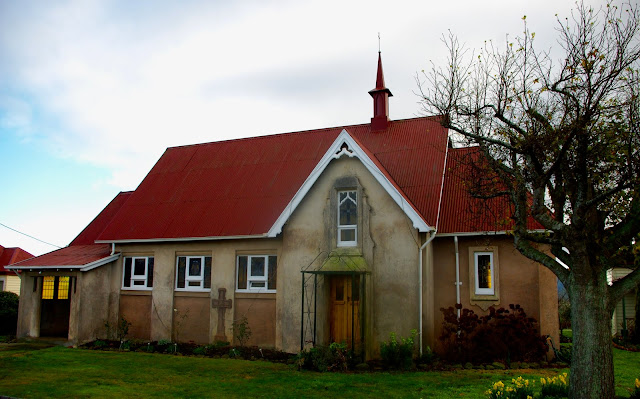No. 250 - Our Lady of Lourdes at Devonport - Three Churches and a Funeral

The first Catholic church at Devonport was established at Torquay in 1870 on the east side of the Mersey River. Known as the ‘Star of the Sea’ this timber church was transported across the Mersey to West Devonport in 1899 and reassembled alongside the convent that had been established by the Sisters of St Joseph in 1893. The rapid growth of Devonport meant that the old Star of the Sea was not adequate for the needs of the town’s Catholic population. Ten years after the relocated church had reopened, plans were made for its replacement with an imposing new structure. The design of the new church was ambitious and was never completed as envisaged: “The new Catholic church to be called Star of the Sea….will be of the Romanesque style of architecture, and with exception of Wynyard, will be the first of its kind in Tasmania, all the others being Gothic order…” The new church was to have a magnificent copper dome and spire: “The height of the dome will be 75 feet, and the tower about the sa...




